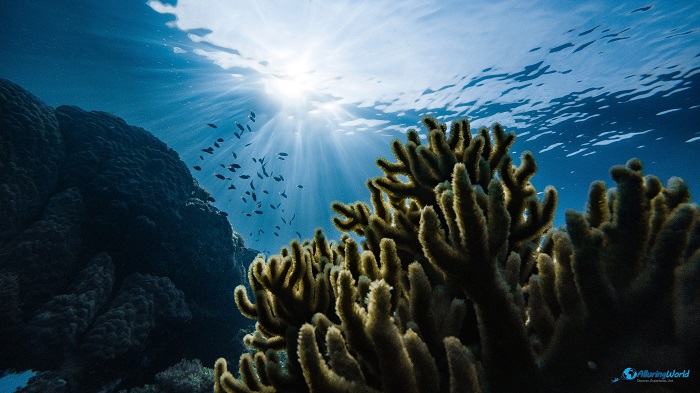The Chuuk Lagoon, formerly known as Truk Atoll, is an important atoll that is located in the central part of the Pacific Ocean, and it is part of the Federated States of Micronesia. Being part of the Chuuk State, which is one of the four states that comprise the Pacific island nation, Chuuk Lagoon is an enclosed natural harbor that is 79 km by 50 km (43 mi by 27 mi) and covers an area of about 2,130 sq km (820 sq mi).

The highest point that can be found is 443 m (1,453 ft) above sea level, and with a population of above 35,000 inhabitants, the majority are living in the capital of the state, Weno, which is located on Moen Island.

Throughout history, Chuuk has been settled by native inhabitants, and records of the first settlers that were found are dating back to 1 and 2 century BC, although from more modern times its story began in 14 century, when with the expanding European empires, the islands were claimed first by the Spanish Empire.

Spain managed to cling to them for a very long time, where in 1899 it sold the islands that are part of the Caroline Islands chain to the German Empire, and that is the year when the Spanish Empire completely withdrew from the Pacific arena.

Germany managed to hold the island up until World War I when the Japanese Navy was tasked with pursuing and destroying the German East Asiatic Squadron and protecting the shipping lanes for Allied commerce in the Pacific and Indian Oceans.

With ongoing operations, the Japanese Empire managed to secure the Marianas, Carolines, Marshall Islands, and Palau island groups by October 1914, thus confirming its status as an empire.

The Japanese Empire was successful in holding Chuuk Lagoon and other Pacific islands up until World War II when Chuuk became the Empire of Japan’s main and most formidable naval base in the South Pacific.

Even though the base was heavily fortified against the Allies who were operating in New Guinea and the nearby Solomon Islands, on 17 February 1944 Chuuk’s capacity as a naval base was destroyed through a naval air attack in Operation Hailstone, by the American forces.

As the attack continued for 3 days, the US planes sank 12 smaller warships and 32 merchant ships, as well as 275 aircraft. These attacks managed to cripple the base, and Chuuk Lagoon did not pose threat to the Allied Forces with the ongoing war.

Being one of the greatest battle stages of World War II, nowadays Chuuk Lagoon is considered to be one of the best places where people can dive and explore the underwater remnants from this period.

Even in 1969, the French oceanographer Jacques Cousteau explored the lagoon and following his documentary about the haunting remains of the naval base, the lagoon became a popular site for scuba-diving enthusiasts. Currently, 9 wrecks can allow diving enthusiasts to experience the devastation that the war brings.

Divers can spend hours exploring the site’s wrecks, returning multiple times without seeing the same wreckage twice, testifying to the great destruction of Operation Hailstone.

In addition, with a local diving guide, visitors can explore the engine rooms and cargo holds of some of the destroyed ships, and when tired of exploring WWII remnants, there are always the amazing and quite colorful soft and hard corals that provide shelter to the local marine life.

All in all, Chuuk Lagoon even though nowadays is not so famous as a tourist spot, it certainly holds its title as the most important place in the world during the events that were unfolding during the Second World War.




